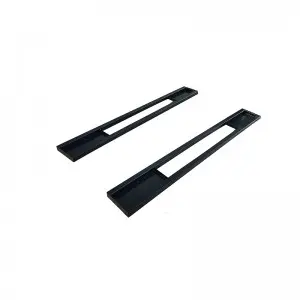Cylinders, with their unique shape and properties, have played an integral role in various fields throughout history. Defined as a solid geometric figure with two parallel circular bases and a curved surface connecting them, cylinders have captured the attention and imagination of scientists, engineers, and artists alike. Their distinct attributes have contributed to their application in a wide range of industries, from engineering and architecture to chemistry and art. In this article, we will delve into the fascinating world of cylinders, exploring their uses, characteristics, and the ways in which they have revolutionized numerous disciplines.

Unlocking the Intriguing World of Cylinders: Exploring their Uses and Characteristics
One of the primary applications of cylinders lies in engineering and construction. The structural integrity and symmetry of cylinders make them suitable for applications such as pipes, hydraulic systems, and compressors. Cylindrical tanks, for instance, provide an efficient and sturdy storage solution for liquids and gases in various industrial settings. Moreover, hydraulic cylinders, equipped with pistons, allow for the smooth and controlled transfer of energy, enabling heavy machinery to function effectively.
Additionally, cylinders find extensive use in the automotive industry. The internal combustion engine, a key component of most vehicles, relies on cylinders to convert fuel into mechanical energy. As the piston moves up and down within the cylinder, it enables the intake, compression, combustion, and exhaust processes that result in the movement of the vehicle. The number, arrangement, and size of cylinders in an engine play a crucial role in determining the power output and performance characteristics of the vehicle.
Cylinders also have a significant presence in scientific laboratories and research facilities. Chemistry, for instance, utilizes cylinders as reaction vessels. Graduated cylinders provide precise measurements for liquids, making them indispensable in experiments and analytical procedures. Moreover, gas cylinders efficiently store and transport various gases used in scientific processes. In the field of physics, cylinders serve as essential components in devices such as lasers, particle accelerators, and x-ray machines, contributing to cutting-edge research and technological advancements.

Unlocking the Intriguing World of Cylinders: Exploring their Uses and Characteristics
Beyond their functional applications, cylinders have artistic implications as well. Artists throughout history have recognized the aesthetic appeal of cylinders and incorporated them into their works. The cylindrical shape can be found in numerous artworks, both ancient and contemporary, showcasing its versatility and timelessness. Sculptors, for instance, often utilize cylinders to create visually appealing and abstract forms, while architects employ cylindrical structures to design iconic buildings and bridges.

Unlocking the Intriguing World of Cylinders: Exploring their Uses and Characteristics
Cylinders also possess unique properties that make them invaluable in specific circumstances. One such property is their ability to roll smoothly. Unlike other shapes, cylinders have low rolling resistance, allowing them to move with little friction or energy loss. This property makes them ideal for various applications, including wheels and bearings used in machinery, transportation, and sports equipment. The efficiency and stability provided by cylindrical shapes have revolutionized the way we travel, participate in sports, and operate machinery.
In conclusion, cylinders have proven to be indispensable in countless fields, thanks to their unique properties and versatility. From engineering and construction to chemistry and art, the applications of cylinders are far-reaching. Their use as structural components, storage vessels, measurement instruments, and artistic elements highlights their significance in multiple disciplines. Furthermore, the intrinsic characteristics of cylinders, such as smooth rolling and stability, have transformed the way we design machinery and engage in various activities. With ongoing advancements and discoveries, it is clear that the intriguing world of cylinders will continue to shape our lives and drive innovation for years to come.New Engery Vehicle Battery Lift
